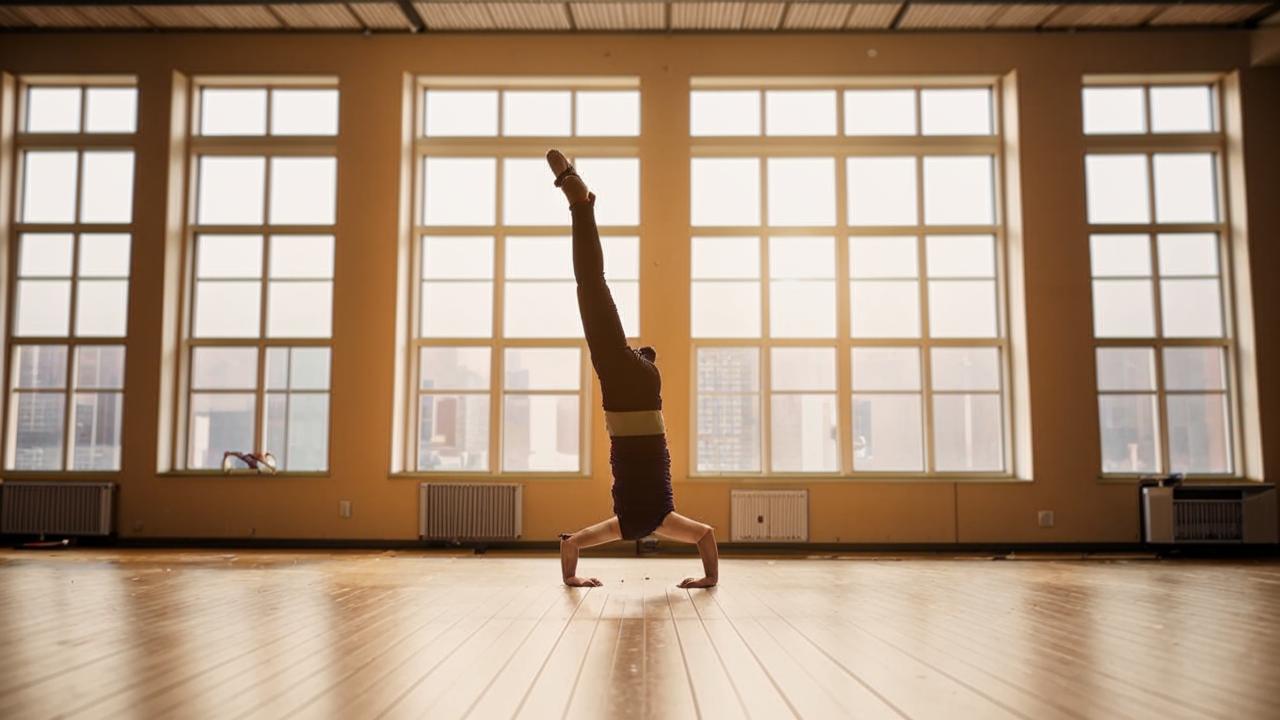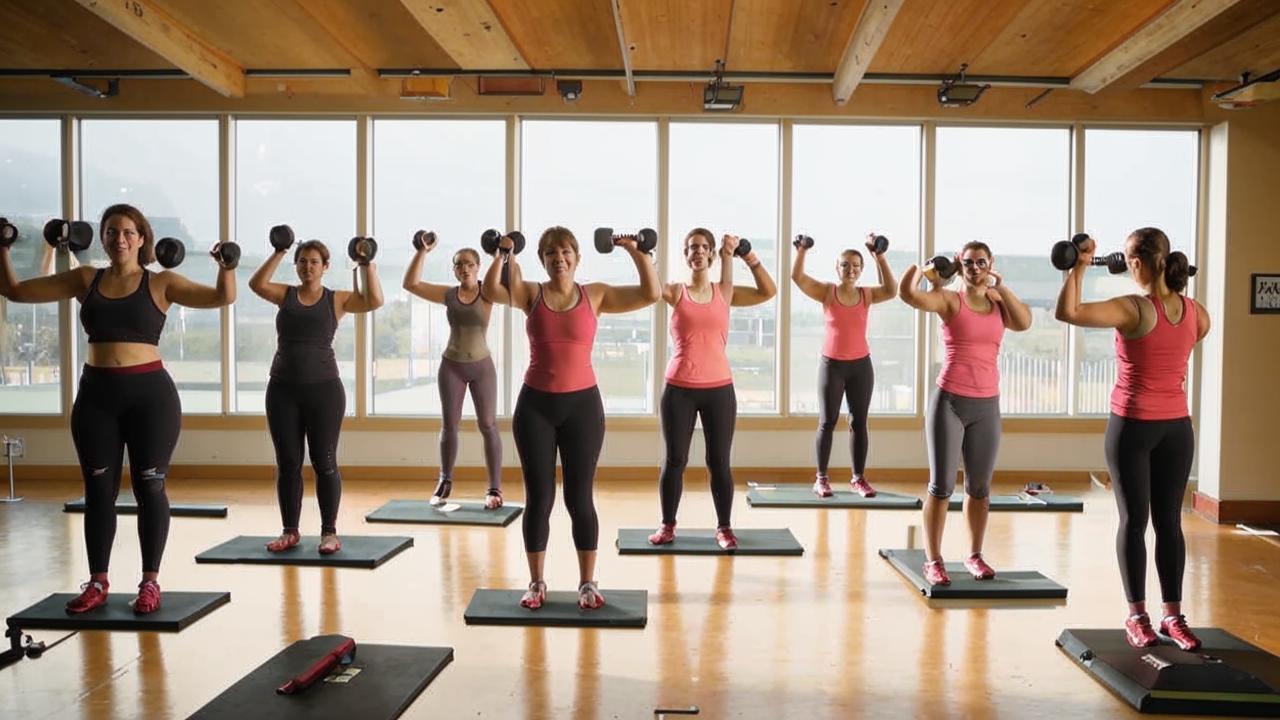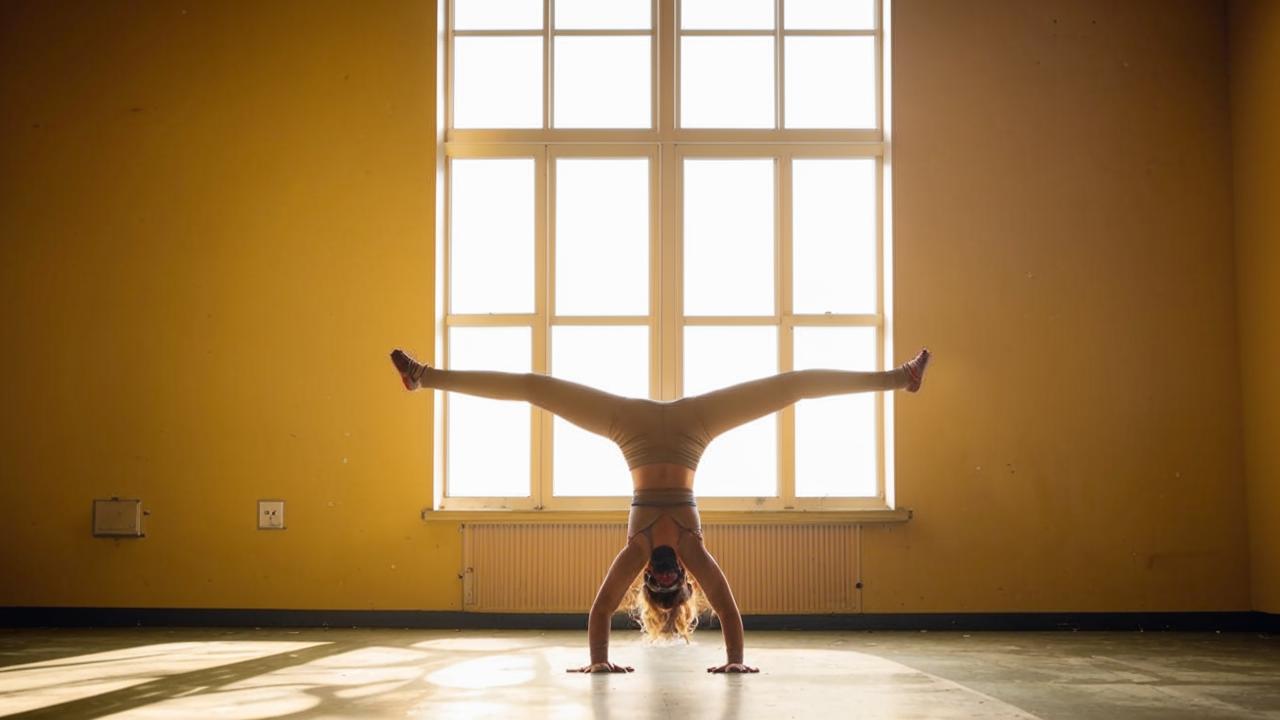fitness trainer with 20 years of experience
“To learn to walk on your hands, you need to strengthen your muscles first. We’re talking about the shoulder girdle, abs and cortex, and back muscles. I’ll give you some tips to keep these muscles toned.”
General recommendations
For handstands it is very important that the muscles of the upper body are strong, but don’t forget about pumping the legs. In any case, it is very important that all muscles are developed proportionally.
I advise you to add a progressive load to your training plan, i.e. gradually increase the weight and complexity of exercises. This way your muscles will strengthen faster.
Don’t forget to watch your diet, for muscle growth you need enough protein. Add complex carbohydrates to your diet for strength and, of course, healthy fats – they help you recover.

Preparatory balance exercises
To learn how to walk on your hands it is very important to master balance. What will it take to do this? Here are the exercises you can do on your own at home.
Stand on one leg
Tehnică
- Start with a simple exercise – stand up straight, feet together and arms along your body and focus on one point in front of you to keep your balance.
- Next, start to gently shift your body weight onto one leg, then slowly bring the other leg off the floor, bending it at the knee. You can raise your knee so that your thigh is parallel to the floor, or you can leave your leg lifted at a height that is comfortable for you.
- Maintain your balance by trying to keep your torso straight and not leaning to the side. For extra support, you can extend your arms out to the sides or join them in front of your chest.
- Keep your breathing calm and even. Focusing on your breathing will help improve balance and stability.
- Gently lower the raised leg to the floor and repeat the exercise while standing on the other leg. You can do the exercise with a stick or a wall if you find it difficult to keep your balance.
Try to hold the pose for 20 to 30 seconds, gradually increasing the time.

Torso pivots on one leg
This is a very effective exercise that helps improve balance, coordination, and strengthens the cortex, legs and back muscles.
Tehnică
- Stand up straight, feet shoulder width apart, arms along your body. Choose a point in front of you to focus your gaze to keep your balance.
- Gently shift your body weight onto one leg. Bend the other leg at the knee and raise it slightly off the floor. Extend your arms out in front of you at shoulder level, palms facing down.
- Keep your shoulders relaxed and lowered. Smoothly rotate your upper torso to one side, trying not to move your lower body. The head turns with the torso.
- Return to the starting position and repeat the turn in the opposite direction. During the execution, try to keep your balance and do not drop the raised leg to the floor.
- Focus on stabilizing your cortical muscles for better support. Breathe evenly and calmly; inhale when returning to the center position, exhale when performing the twist.
Perform 10 repetitions on one leg, then change legs and repeat the exercise.
Practice these exercises regularly, gradually increasing in difficulty and duration. Remember, improving your balance takes time and consistency.
Warm-up exercises
Before you start practicing handstand, do a comprehensive warm-up. Here’s a set of effective warm-up exercises that will help prepare your body for practice, improve circulation, and reduce the risk of injury.
- Marching in place – two minutes. Raise your knees high while actively working your arms. This easy practice helps warm up your muscles and improve circulation.
- Arm Rotation – one minute. Make large circles with your arms forward and backward. It will warm up the shoulder girdle and increase the amplitude of movement in the shoulder joints.
- Side bends – one minute. Stand straight with your feet shoulder width apart. Perform smooth tilts of the torso to the left and right, stretching the lateral muscles of the body.
- Stretch calves – 30 seconds for each leg. Stand facing a wall, one leg forward and the other behind you. Stretch the body forward, feeling the stretch in the calf muscle of the back leg.
- Rotate your wrists and ankles for one minute. Do a few circular movements for each wrist and ankle to prepare the joints for the upcoming load.
- Jumping in place – one minute. Allow you to increase your heart rate and warm up your entire body.
- “Cat-cow” – one minute. Get on all fours, alternate backbends up and down, maximizing spinal relaxation and kneading the muscles.
- Dynamic stretching of the hips – one minute. From a standing position, step one leg forward into a lunge, squatting deeply, then return to the starting position and repeat on the other leg. This exercise stretches the leg muscles well and prepares them for active work.

Nuances and technique of execution
Learning the handstand
The first and main point is that you must confidently perform the handstand. Before you start walking, it is important to learn how to keep your balance and control your movements. Practice a static handstand until you can confidently walk into it and hold it for at least 20 seconds. If you have difficulty learning it, try using a wall for support. Start in a plank position facing the wall and gradually “lift” your legs up, while moving your arms closer to the wall, until you are in a handstand supported by the wall. Then gently push off the wall, trying to keep your balance on your own. Over time, you will learn how to get into a handstand without the support of the wall.
To get out of the rack safely, return to the starting position either by bending your legs and doing a forward somersault or, if you are flexible enough, you can try lowering your legs into a bridge.

Preparing your space and safety net
First, make sure you have enough space around you to safely perform the somersault. Use a soft surface, such as a gymnastics mat, to reduce the risk of injury if you fall. Start in a kneeling or sitting position to reduce the height of the fall and make the exercise less intimidating.
Provide yourself with solid support. When learning handstands and walking on them, it is crucial to have someone around who can back you up by holding your feet while balancing until you fully learn to control your body. It is best if you are supervised by a trainer, but you can also ask a friend to help you.
Your partner’s job is to gently support your legs, helping you to keep your balance as soon as you are upright.
Over time and after a few practice sessions, the need for the constant presence of a support person will diminish. Ask him/her to be on standby to step up and support you in case you lose your balance.
Tehnică
- Step forward with your lead foot. That is, the one that feels most natural to you when entering a handstand. Step strictly forward, avoiding sideways movements to ensure a stable upright balance.
- Lean forward, resting your hands on the floor. The moment you take a step, your body should gently lean toward the floor, like a swing, in one smooth motion. It is important not to hold your arms too rigidly or try to lift your legs up sharply, as this can cause you to lose your balance and fall. The arms should remain straight. Bending your elbows increases the risk of injury. Work your shoulders by pulling them up towards your ears as if you were shaking them.
- Stretch your legs and torso upward. As part of the same smooth movement, use the momentum from the forward bend to lift your legs and straighten your body. Keep your back and legs straight, and do not tilt your head back to avoid excessive arching of the back and possible injury. Make sure that your assistant is nearby when you lift your legs. This is the critical moment when the risk of falling is maximized.
- Keep your feet flat and tightly pressed together, this will help prevent you from falling on your side. Your main support should come from your arms, not your hands, distributing your body weight evenly
- Stay in the upright position for at least 20 seconds, after which you can begin to move slowly.
- Move forward in small steps. Slide one arm forward, leaning slightly toward your movement. This will be your first step. Then move your other arm forward, again leaning in the direction of your movement. Small steps are the key to successfully mastering arm walking.
- Avoid steps that are too fast or large. Large steps can easily upset your balance, especially when you are just learning this element.
Aim to move in a linear fashion, choosing your direction in advance instead of placing your hands in random directions. Controlling your direction is an important aspect of learning to walk on your hands.
How can I improve my technique?
It’s important to remember the proper technique of execution, specifically hand placement – strictly under the shoulders, toes spread out for better balance. Look down between your hands without throwing your head back to keep your balance. Your body should form a straight line from your toes to your heels. Avoid excessive arching in your back.
Visualize yourself doing well – this will give you motivation. You can also try recording your workouts so that you can analyze your mistakes and correct them later. And most importantly – do not give up, because the result is achieved through small steps.
Benefits of walking on your hands
- Increasing blood flow to the brain, providing more oxygen and improving its function.
- Strengthening of the back muscles.
- Increasing overall endurance.
- Training of the vestibular apparatus, improving your body’s sense of self.
Contraindications to arm walking
- Increased intracranial and blood pressure.
- Injuries to the spine.
- Pregnancy.
- Damage to the joints of the hands.
Important! In case of doubts about your health, it is recommended to consult a doctor.
Walking on your hands is an indicator not only of physical strength, but also of mental stability. Following these rules, you will not only learn to perform the element, but also significantly improve your physical fitness.






